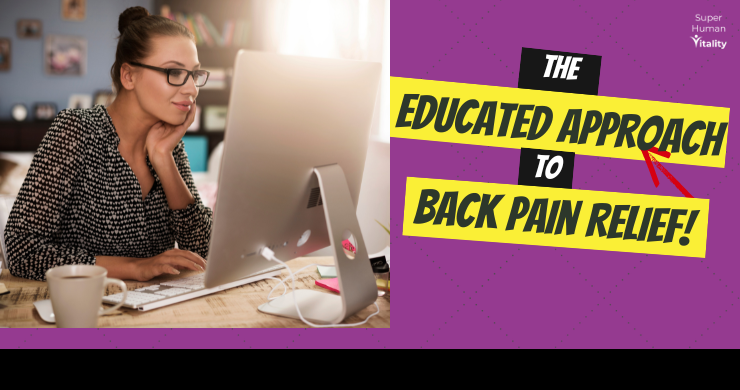
Introduction to Back Pain
Understanding Back Pain
Back pain is a complex, multifaceted condition that affects individuals of all ages and can significantly impact daily activities and quality of life. It is characterized by discomfort or pain in the lower, middle, or upper back, and can range from a dull, constant ache to a sudden, sharp sensation. The nature of back pain can be acute, subacute, or chronic, with acute pain being the most common form, often resolving within a few weeks with or without medical intervention.
Prevalence and Impact on Quality of Life
Back pain is one of the leading causes of disability worldwide, with a high prevalence among adults. It is estimated that up to 84% of adults will experience back pain at some point in their lives. The condition not only affects personal health but also has significant economic implications, including healthcare costs and lost productivity due to work absenteeism.
Common Causes of Back Pain
- Traumatic: Injuries from accidents or falls can lead to back pain.
- Degenerative: Conditions like herniated discs and osteoarthritis are common in aging populations.
- Oncologic: Cancerous growths can impinge on back structures, causing pain.
- Infectious: Infections like osteomyelitis can manifest as back pain.
- Inflammatory: Diseases such as ankylosing spondylitis contribute to back discomfort.
- Metabolic: Bone density issues like osteoporosis can lead to fractures and pain.
- Postural: Poor posture from sedentary lifestyles often results in back pain.
- Referred pain: Problems in other body areas, such as the kidneys, can cause perceived back pain.
The Importance of an Educated Approach
An educated approach to back pain involves understanding the various etiologies and recognizing the need for a comprehensive assessment that includes both physical and psychosocial factors. It is critical to differentiate between the types of back pain to tailor treatment effectively. Emphasizing patient education, self-management strategies, and non-invasive treatment options can lead to better outcomes and prevent chronicity. Healthcare professionals must stay informed about the latest evidence-based practices and coordinate care to address the individual needs of each patient.
Assessing Your Back Pain
When to Seek Medical Advice
Back pain is a common ailment that can often be managed with home remedies and self-care. However, there are certain situations where medical advice is crucial. Seek immediate medical attention if your back pain:
- Is severe and doesn’t improve with rest
- Spreads down one or both legs, especially if the pain extends below the knee
- Causes weakness, numbness, or tingling in one or both legs
- Is accompanied by unexplained weight loss
- Occurs after a fall, blow to your back, or other injury
- Is accompanied by fever
Additionally, if you have a history of cancer, osteoporosis, steroid use, or drug or alcohol abuse, you should consult a healthcare professional if you experience new back pain.
Professional Diagnosis vs. Self-Diagnosis
While it’s tempting to self-diagnose back pain using online resources, professional diagnosis is key to effective treatment. Healthcare professionals can identify red flags for serious conditions and use diagnostic tools like MRI, CT scans, and X-rays to get a clear picture of the underlying issues. Self-diagnosis may lead to incorrect treatment and potentially worsen the condition.
Identifying the Type of Back Pain
Back pain can be categorized as acute, subacute, or chronic, depending on its duration. Acute back pain lasts for up to six weeks, subacute lasts six to twelve weeks, and chronic back pain persists for more than twelve weeks. Identifying the type of pain is essential for determining the appropriate treatment plan.
Keeping a Pain Diary
Maintaining a pain diary can be an invaluable tool for both you and your healthcare provider. Document the following:
- The intensity of the pain on a scale from 1 to 10
- The location of the pain and whether it radiates
- Activities that exacerbate or alleviate the pain
- Times of day when the pain is worse or better
- Any over-the-counter medications or treatments used and their effects
This record can help your healthcare provider make a more accurate diagnosis and track the effectiveness of your treatment plan over time.
Non-Invasive Techniques for Relief

Physical Therapy and Exercises
Physical therapy is a cornerstone in the management of back pain, offering a range of benefits from improving mobility to strengthening the muscles that support the spine. Tailored exercise programs, often developed by physical therapists, can help patients regain function and reduce pain. These programs typically include a combination of aerobic conditioning, stretching, and strengthening exercises. Core stabilization exercises, which target the muscles in the abdomen and back, are particularly effective in providing support to the lower spine. It is essential for patients to engage in these exercises regularly and under professional guidance to ensure proper technique and to avoid further injury.
Stretching and Flexibility Routines
Improving flexibility through stretching is another vital component of back pain relief. Tight muscles, particularly in the hamstrings, hips, and back, can exacerbate back pain. Stretching routines can alleviate this tightness and enhance range of motion. Patients should incorporate stretching into their daily routine, focusing on gentle, sustained stretches rather than bouncing or jerking movements, which can cause muscle strain.
Heat and Cold Therapy
Heat and cold therapy can provide immediate, though temporary, relief for back pain. Cold therapy, such as ice packs, can reduce inflammation and numb sore tissues, providing relief from acute pain. Heat therapy, on the other hand, can relax and soothe muscles and heal damaged tissue. Methods include heating pads, warm baths, or heat wraps. It’s important for patients to use these therapies correctly—cold therapy is generally recommended for the first 48 to 72 hours following an injury, followed by heat therapy to promote blood flow and healing.
Mind-Body Techniques (Yoga, Tai Chi, Meditation)
Mind-body techniques such as yoga, tai chi, and meditation can also play a role in managing back pain. These practices focus on the connection between the mind and body, promoting relaxation, improving flexibility, and strengthening muscles. Yoga and tai chi combine physical postures with breathing exercises and meditation, which can help reduce stress and tension that may contribute to back pain. Meditation alone can help patients develop better pain management skills by focusing on relaxation and breathing. Consistent practice of these techniques can lead to long-term benefits in pain reduction and overall well-being.
It is important for patients to remember that while non-invasive techniques can be highly effective for back pain relief, they should be part of a comprehensive treatment plan that may include other therapies and lifestyle adjustments. Patients should consult with healthcare professionals to determine the most appropriate combination of treatments for their specific condition.
Lifestyle Adjustments for Back Health
Ergonomic Workspaces
Creating an ergonomic workspace is essential for preventing and managing back pain. An ergonomically designed chair supports the natural curve of the spine and encourages good posture. The height of the chair should allow feet to rest flat on the floor, with knees at a 90-degree angle. The computer monitor should be at eye level to prevent neck strain, and the keyboard and mouse should be positioned to keep wrists straight. Standing desks or adjustable workstations can also promote movement and reduce the risks associated with prolonged sitting.
Proper Lifting Techniques
Improper lifting can lead to back injuries. To lift correctly, stand close to the object with feet shoulder-width apart. Bend at the knees and hips, not the waist, and keep the back straight. Lift using the leg muscles, not the back, and hold the object close to the body. Avoid twisting the torso while carrying heavy items; instead, turn the entire body in the direction of the movement.
Nutrition and Hydration
A balanced diet rich in anti-inflammatory foods can help manage back pain. Foods such as leafy greens, berries, nuts, and fatty fish provide nutrients that can reduce inflammation. Adequate hydration is also crucial as it helps maintain the elasticity and fluidity of soft tissues and joints. Drinking water throughout the day can prevent dehydration, which can exacerbate pain.
Weight Management
Excess body weight, particularly around the midsection, can strain the lower back. Maintaining a healthy weight through a balanced diet and regular exercise can alleviate this pressure. A study in the Spine Journal found that a medically supervised weight loss program improved back pain and function. Weight management should be approached holistically, considering both nutrition and physical activity.
Sleep and Rest
Quality sleep is vital for back health. A supportive mattress and pillow can align the spine properly during sleep. Sleep hygiene practices, such as maintaining a cool, dark, and quiet bedroom environment and establishing a regular sleep schedule, can improve sleep quality. Additionally, taking breaks throughout the day to stand, stretch, or walk can prevent stiffness and promote blood circulation, contributing to overall back health.
Alternative Therapies
Acupuncture and Acupressure
Acupuncture is a traditional Chinese medicine technique that involves inserting thin needles into specific points on the body to alleviate pain and promote healing. Studies suggest that acupuncture can be more effective than no treatment for chronic nonspecific low back pain, although its effectiveness compared to sham acupuncture is still debated. Acupressure, on the other hand, uses the same principles but involves applying pressure to these points instead of using needles. It can provide more relief than some types of massage and is considered a safe alternative therapy for back pain.
Chiropractic Care
Chiropractic care involves spinal manipulation and mobilization to improve function and reduce pain. The effectiveness of chiropractic adjustments for back pain varies, with some studies showing similar outcomes to other recommended therapies. It is generally considered safe when performed by a trained and licensed practitioner and may be particularly beneficial for certain individuals with back pain.
Massage Therapy
Massage therapy can offer significant pain relief and is often recommended as part of a comprehensive treatment plan for back pain. Different types of massage, such as Swedish and deep tissue, can be tailored to an individual’s needs. Massage has been found to be more beneficial for back pain relief than some other therapies, including joint mobilization and relaxation techniques.
Red Light Therapy
Red light therapy, also known as low-level laser therapy (LLLT), uses specific wavelengths of light to penetrate the skin and tissues to promote healing and reduce inflammation. Evidence suggests that LLLT can be more effective in reducing pain compared to sham laser treatments, although the strength of the laser and number of treatments can vary.
Home Infrared Saunas
Home infrared saunas use infrared light to create heat, which can penetrate deeper into the tissues than the hot air of a traditional sauna. This deep heating can help relax muscles and relieve pain. While more research is needed to fully understand the benefits of home infrared saunas for back pain, they are a popular choice for those seeking alternative therapies.
Conclusion: Alternative therapies offer a range of non-invasive options for back pain relief. While individual responses can vary, these therapies may provide significant benefits, especially when combined with a comprehensive treatment plan. It is important to consult with healthcare professionals before starting any alternative therapy to ensure it is appropriate for your specific condition.
Understanding and Managing Chronic Back Pain
Defining Chronic Back Pain
Chronic low back pain (cLBP) is defined as pain that persists for 12 weeks or longer, often despite the fact that an initial injury or underlying cause of acute low back pain has been treated. This type of pain is not only a physical condition but also interacts with psychological and social factors, contributing to a complex experience of health and well-being. Chronic back pain can lead to significant functional impairment and a decrease in quality of life, making it a leading cause of disability worldwide.
Coping Strategies for Chronic Pain
Effective coping strategies are essential for managing chronic back pain. These strategies can include:
- Staying active: Engaging in regular physical activity and avoiding bed rest can help maintain muscle strength and flexibility.
- Self-care education: Learning about the condition and how to manage it can empower patients to take control of their pain.
- Use of heat or cold: Applying heat or cold packs can provide temporary pain relief.
- Relaxation techniques: Practices such as deep breathing, meditation, or progressive muscle relaxation can reduce stress and alleviate pain.
- Medication management: Over-the-counter pain relievers or prescription medications can be used judiciously to manage pain.
The Role of Support Groups and Counseling
Support groups and counseling play a vital role in managing chronic back pain by providing emotional support and teaching additional coping skills. These services can help patients:
- Share experiences and learn from others who are facing similar challenges.
- Develop strategies to deal with the psychological impacts of chronic pain, such as depression or anxiety.
- Improve communication with family, friends, and healthcare providers.
Long-term Management Plans
Developing a long-term management plan is crucial for individuals with chronic back pain. Such a plan should be comprehensive and may include:
- Regular physical therapy: To maintain mobility and manage pain.
- Exercise programs: Tailored to the individual’s capabilities and needs.
- Behavioral therapy: To address any maladaptive coping mechanisms.
- Regular medical evaluations: To monitor the condition and adjust treatments as necessary.
- Lifestyle modifications: Such as ergonomic adjustments at work and home, diet changes, and weight management.
It is important for patients to work closely with their healthcare providers to create and adjust their management plan over time, ensuring it remains aligned with their evolving needs and goals.
Conclusion and Moving Forward
Summarizing Key Techniques
The journey to back pain relief is often multifaceted, involving a combination of techniques tailored to the individual’s needs. Throughout this guide, we have explored various non-invasive methods, lifestyle adjustments, alternative therapies, and strategies for managing chronic back pain. Key techniques include physical therapy exercises, stretching routines, heat and cold therapy, and mind-body practices such as yoga and meditation. Ergonomic adjustments, proper lifting techniques, nutrition, weight management, and adequate sleep are lifestyle factors that play a crucial role in back health. Alternative therapies like acupuncture, chiropractic care, and massage therapy offer additional avenues for relief. For those with chronic back pain, understanding the condition, utilizing coping strategies, and seeking support are essential for long-term management.
Creating a Personalized Back Pain Relief Plan
Creating a personalized plan for back pain relief begins with a thorough assessment of your pain and lifestyle. Incorporate techniques that resonate with your preferences and are feasible for you to practice consistently. It may involve trial and error to find the right combination of therapies and adjustments. Engage with healthcare professionals to guide your choices and ensure that your plan is safe and effective. Document your plan and track your progress, making note of what works and what doesn’t.
When to Re-evaluate Your Approach
Re-evaluation of your back pain relief approach should occur regularly or when there is a significant change in your symptoms. If you experience new or worsening pain, it’s crucial to consult with a healthcare provider. Additionally, if you find that certain techniques are no longer effective or are causing discomfort, it may be time to explore other options. Stay attuned to your body’s responses and be willing to adjust your plan as needed.
Staying Informed and Proactive
Staying informed about the latest research and developments in back pain management can empower you to make educated decisions about your care. Seek out reputable sources of information and consider joining support groups or forums where you can learn from the experiences of others. Being proactive in your approach means not only adhering to your personalized plan but also advocating for yourself in healthcare settings and staying committed to your overall health and well-being.
In conclusion, back pain relief is an active and ongoing process. By summarizing key techniques, creating a personalized plan, knowing when to re-evaluate, and staying informed and proactive, you can navigate the path to managing your back pain more effectively. Remember that you are the most important member of your healthcare team, and your engagement in the process is vital to achieving the best possible outcomes.





